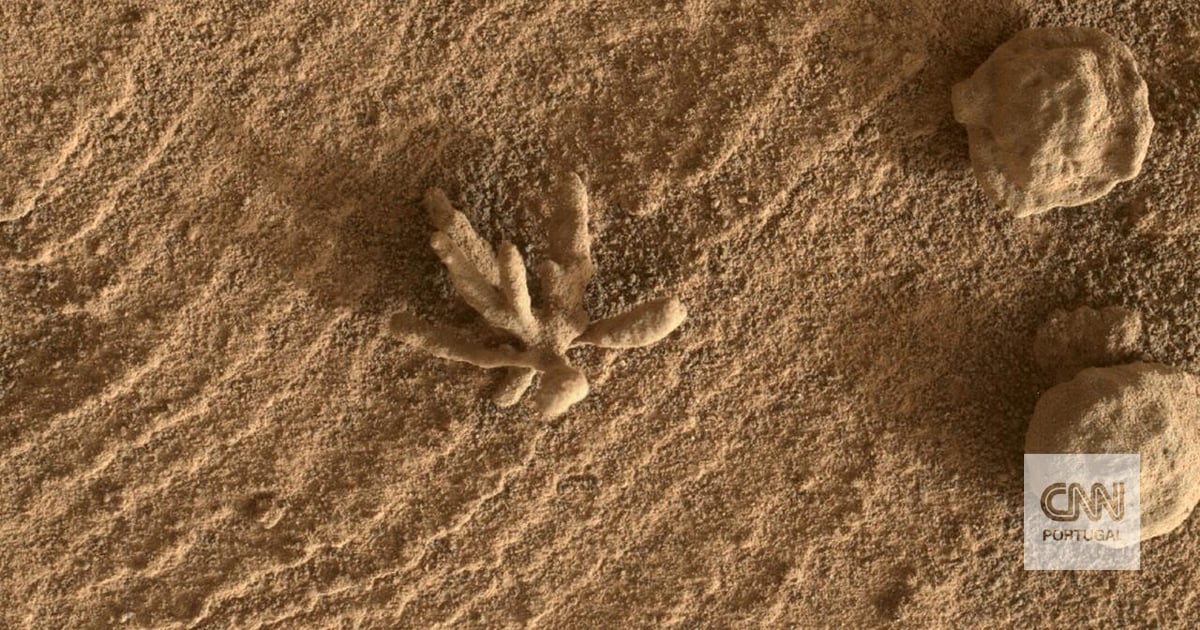This is perhaps the closest we’ll ever get to finding a flower on Mars.
During its ongoing investigation of the Martian rocks in Gale Crater, the Curiosity rover came across a little surprise. This rocky artifact, which resembles a piece of coral or a flower, is smaller than a coin.
The Martian “flower” and the spherical pieces beside it were probably “created in the distant past when minerals transported by water cemented the rock”, according to the NASA.
Curiosity imaged the small rocky arrangement on February 24 using the Mars Hand Lens Imager, a camera located at the end of its robotic arm.
The discovery is similar to other small elements that Curiosity has found in the past, all of which were formed “when mineralizing fluids flowed through conduits in rocks”, the agency reports. Previously, the Opportunity rover also found “Martian blueberries”, small spheres indicative of existence. watery soil past on the red planet.
Each image Curiosity captures and shares of these elements helps researchers piece together the chronology of the presence of water in the crater.
A decade of exploration
This year, Curiosity will celebrate an important milestone: its 10th anniversary on Mars. Curiosity landed on the red planet on August 5, 2012. For the past decade, it has explored the crater, and the Mount Sharp landform at its center.
The mission was designed to determine whether Mars was ever habitable for microbial life. Early on, the aptly named rover discovered chemical and mineral clues indicative of the planet’s habitability sometime in the distant past. Since then, Curiosity has investigated the geological record to understand when Mars may have been better suited to support life.
Curiosity continues to pick its way through sharp boulders and ridges to collect rock and earth samples for analysis.
The car-sized rover paved the way for the Perseverance rover and the Ingenuity helicopter, which are currently exploring Jezero Crater, located 3700 km away, and will eventually bring the first Mars samples to Earth through future missions. . The combined efforts of these rovers could help answer the fundamental question of the possible existence of life on Mars.
–


